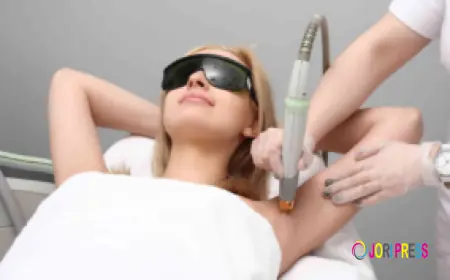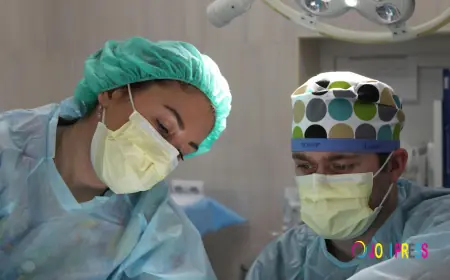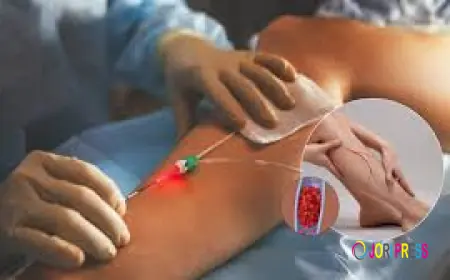Skin Looks Worse After Hydrafacial in Riyadh: What You Need to Know
Skin Might Look Worse After a HydraFacial in Riyadh. If you've had a Hydrafacial in Riyadh and noticed redness, breakouts, or dullness afterward, you're not alone.
Hydrafacial is one of the most popular non-invasive skincare treatments in Riyadh, known for deeply cleansing, exfoliating, and hydrating the skin in a single session. Many patients report glowing, dewy, and refreshed skin right after their treatment. However, some people may experience an unexpected outcome—their Skin Might Look Worse After a HydraFacial in Riyadh. If you've had a Hydrafacial in Riyadh and noticed redness, breakouts, or dullness afterward, you're not alone.
In this blog, we’ll explore why this happens, whether it's normal, and how to handle it. We'll also share expert insights from dermatologists and skin clinics in Riyadh to help you understand this skin reaction and get the most out of your Hydrafacial treatment.
Why Does Skin Sometimes Look Worse After Hydrafacial?
Hydrafacial is a medical-grade facial that uses a patented device to cleanse pores, extract impurities, and infuse the skin with serums. It’s suitable for all skin types and typically considered gentle. Still, in some cases, skin may appear irritated or experience temporary breakouts. This happens due to several possible reasons:
1. Skin Purging
After a Hydrafacial, your skin may go through a purging phase. This is especially true if you had clogged pores, blackheads, or acne-prone skin. As the facial deeply exfoliates and clears the skin, it brings underlying impurities to the surface, leading to temporary breakouts or small pimples.
In Riyadh, where hot, dry weather can cause excessive oil and dirt buildup, Hydrafacials can trigger a brief purge as your skin adjusts to the cleanse.
2. Increased Sensitivity
Hydrafacial treatments use exfoliation techniques, such as glycolic and salicylic acid solutions. If your skin is sensitive or wasn’t properly prepped before the session, it may become red, tight, or slightly inflamed afterward.
This effect is usually mild and subsides within 24–48 hours.
3. Product Reaction or Allergies
Sometimes, your skin may react to specific serums used during the treatment. Hydrafacial involves infusing the skin with peptides, antioxidants, and hydrating ingredients. If your skin barrier is compromised or you're allergic to any of these substances, irritation or rash may occur.
Always inform your aesthetician about any known allergies or sensitivities before the session.
4. Improper Technique or Equipment
The expertise of your skincare provider matters. In Riyadh, where the aesthetic market is growing rapidly, it’s important to choose a licensed clinic with certified professionals. Poor technique or uncalibrated devices can lead to excessive suction or harsh exfoliation, which may leave the skin bruised or irritated.
How Long Will the Reaction Last?
In most cases, any side effects after a Hydrafacial are temporary. Redness usually fades within a few hours, while mild purging may take a few days to resolve. If you experience breakouts, dryness, or flaking, it typically improves within a week as your skin heals and regenerates.
However, if symptoms persist beyond 7–10 days or worsen, it's best to consult a dermatologist.
What Can You Do to Help Your Skin Recover?
After a Hydrafacial, proper aftercare is essential to support healing and avoid worsening skin conditions. Here are some expert-recommended tips, especially useful for Riyadh’s climate:
✅ Avoid Sun Exposure
Riyadh’s intense sun can aggravate post-facial sensitivity. Avoid direct sunlight for at least 48 hours, and always use a broad-spectrum sunscreen with SPF 30 or higher.
✅ Stay Hydrated
The desert climate can dehydrate your skin, especially after a facial. Drink plenty of water and use hydrating products like hyaluronic acid serums and moisturizers.
✅ Skip Harsh Skincare Products
Avoid using retinol, exfoliants, or products with alcohol for 3–5 days post-treatment. Stick to gentle cleansers and moisturizers.
✅ Don’t Pick or Touch Your Face
If breakouts occur, avoid touching or popping pimples. Let your skin purge naturally to prevent scarring and further inflammation.
✅ Use Soothing Products
Products with ingredients like aloe vera, niacinamide, or chamomile can calm redness and reduce irritation.
When to See a Dermatologist in Riyadh
If your skin worsens significantly after your Hydrafacial, it's a good idea to consult a skincare specialist. Visit a certified dermatology clinic in Riyadh if you experience:
-
Persistent redness or rash beyond one week
-
Painful cystic acne
-
Peeling or burning sensations
-
Allergic reactions (swelling, itching, hives)
Early intervention can prevent long-term skin damage and ensure you're following the right skincare routine for your skin type.
Choosing the Right Hydrafacial Clinic in Riyadh
The quality of your Hydrafacial experience heavily depends on the clinic and the expertise of the practitioner. Look for these factors:
-
Licensed dermatologists or certified aestheticians
-
Use of genuine Hydrafacial MD devices
-
Personalized consultation before treatment
-
Transparent pricing and aftercare guidance
Some of Riyadh’s top-rated skincare clinics offer Hydrafacial as part of customized skin programs that address acne, pigmentation, and aging.
Final Thoughts
If your skin looks worse after a Hydrafacial, don’t panic—it’s often part of the healing or detoxification process. With proper care and expert guidance, your skin will begin to look brighter, healthier, and more balanced in the following days.
In Riyadh, where environmental factors like heat, dust, and dry air challenge skin health daily, Hydrafacial can be a beneficial part of your skincare regimen. Just ensure you're choosing a reputable clinic and following appropriate aftercare to maximize your results.
What's Your Reaction?
 Like
0
Like
0
 Dislike
0
Dislike
0
 Love
0
Love
0
 Funny
0
Funny
0
 Angry
0
Angry
0
 Sad
0
Sad
0
 Wow
0
Wow
0
















































